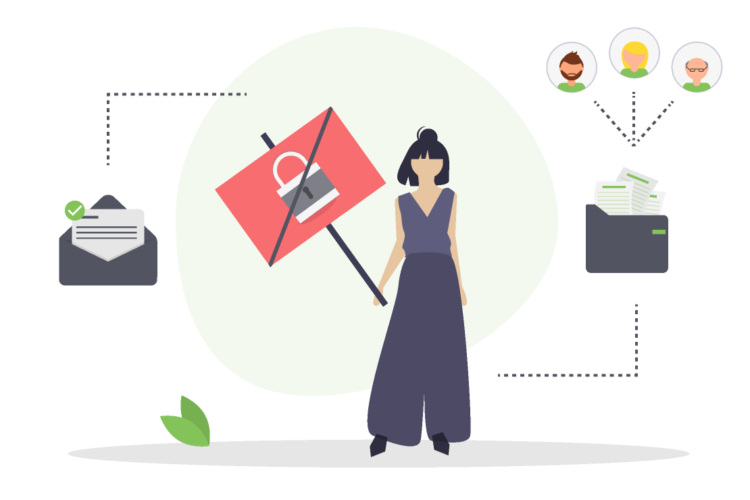Table of contents
1. UX design ethics: a ridiculously simple guide
1.1 The user’s rights vs. the company’s interest: who should win?
1.2 Ethics in User Experience Design
2. The categories of UX ethics
2.1 Category 1: The personal ethics
2.2 Category 2: Misdirected intent
2.3 Category 3: Benevolent intent
3. How to create ethical UX designs: 5 tips
3.1 Start your UX projects with the right mindset
3.2 Always provide multiple options to choose
3.3 Explain what will happen
3.4 Be transparent about privacy
3.5 Make cancelling easy
1. UX design ethics: a ridiculously simple guide
Let’s imagine you’re an entrepreneur who owns an exciting startup. During yesterday’s launch, you’ve got another idea on how to get more clients. Your friend, who’s also managing a business, told you he was able to get more leads with this new awesome app. Obviously, you want to check it out, too. What kind of business owner doesn’t want leads, right?
So, you go to that tool’s website. You read everything. Seems like it’s worth the try. You decide to sign up for the free version. Just to try it out. Suddenly, a big, red pop-up window fills the entire screen. It says that the premium version is 10 percent off today so you should sign up for it instead. “Hmm… Okay, this sounds good, but I’d like to try it out first…” You look around but the button that closes that pop-up window is nowhere to be found. Instead, there’s the “Yes, sign me up now” button. That’s it.
You have two choices: close the tab in your browser and forget about it or sign up for the paid version without the free trial. Do you think that’s fair to you as a potential customer? If “no” is your answer, you’ve just been introduced to the dark side of UX. Because many companies use techniques like these to get more customers, the topic of ethics in UX has been hot recently. In this post, let’s take a close look at UX ethics and how to stay ethical when designing digital products.
So, let’s get back to the example for a second. What happened there was that you as a hypothetical user were given only one choice. That choice might be good for your company, of course, so the whole situation left you feeling a bit frustrated. Let’s now take a look at this situation from the perspective of ethics.
1.1 The user’s rights vs. the company’s interest: who should win?
On the one hand, there’s you, a potential client, who, in business terms, is a lead, ready to sign up for the free trial of an online app. You’ve spent some time on the pricing page, which was registered by the system as long enough. When you started moving your mouse up the screen, it perceived it as an attempt to leave. That’s when that annoying pop-up appeared. It had only one way out: sign up for the paid version of the app.
On the other hand, there’s a business. Its website lists the pricing for each tool and has buttons to sign up for different services packages: the free one and the premium one. Obviously, the premium one has a better chance to help the user. So, the company tries to convince you to sign up for it. The folks at that company might be thinking they’re acting ethically because the paid version will help the user with their business. But how ethical is their move to convince you to sign up and pay right away?
You might just close the window and forget about it, of course, but is their lead generation technique “ethical”? Shouldn’t you as a user be entitled to having a choice instead of following the designer’s goals, which, essentially, are the company’s goals? One could say that UX ethics range from complete freedom to navigate to making all important decisions for them. Here’s one ethical interpretation of the situation where a company’s interests and the user’s interests are involved.
1.2 Ethics in User Experience Design
Promoting a product or a company is a big part of the work of a UX designer. That person needs to find ways to show the advantages of buying that product to customers. If they buy it, the product is likely to change their behaviour or influence their personal or professional life somehow.
The way the UX design presents the product is very important. If the designer chooses the company’s interests over those of the users, he or she creates an ethical problem. Clicking on that signup button might not seem like such a big deal. But think about this. By signing up for a premium account, the user has to give away:
- their personal information (their name, date of birth, phone number, etc.)
- the information about their business (the name of the company, the number of employees, the address, etc.)
- financial information (the credit card number details, PayPal account details, etc.).
On top of that, there’s always a chance that some third-parties or cybercriminals might get their hands on that data. Don’t believe they can? Check out this list of the biggest data breaches of 2019 and you’ll be shocked. The top spot belongs to Marriott, whose databases were hacked and personal data of 383 million guests was exposed.
So, suddenly, designing that intrusive pop-up window without any navigation options seems to be a bit unethical, right? Such a window is deliberately guiding the user to the action they might not actually want to do. Still, some of them will do it, mostly because they thought it was the best thing to do (plus they had no other readily available choices).
Eventually, many people will perceive the chosen design to be connected with the company’s values and goals. Do they want to be known as a company that comes off as ridiculously salesy and lacks respect for their customers? Answering this question before creating something is a must.
2. The categories of UX ethics
The topics of UX ethics should be considered long before the designer starts their work. One of the most important things to know is the categories of ethics in UX design. There are a few of them out there.
2.1 Category 1: The personal ethics
This category applies to UX designers. Their work often relates to their personal goals, values, and motivations, so they choose to work with companies that share them. Many UX designers have strong values when it comes to ethics, environment protection, equality, and other important topics.
Mike Monteiro, a well-known design expert, had written A Designer’s Code of Ethics, an article where he explained what many of his colleagues believe: A designer is first and foremost a human being.
Every designer chooses to impact the people who come in contact with their work, so he or she is well-aware if it can hurt or help them. By saying so, Monteiro implies that the designers are responsible for the work they share with others.

Source: A Designer’s Code of Ethics, Medium
This is the essence of the personal ethics category: the decision to work for a company is up to the designer. The designer must ask themselves if they share the values with a company and agree with their design principles.
2.2 Category 2: Misdirected intent
Estelle Leotard, a UX writer at Studicus, says: “If the intent of a design project is to downgrade or ignore the needs of the users and convince them to buy or use something, then ethics will be a problem.”
Indeed, any situation where the interest of a business or a system overwhelms the users’ needs involves an ethical dilemma. The outcome of such a project would be a profit-driven product where the design works to influence the decision of users in a way that drives them towards the company’s goals.
Less than a decade ago, designs like these were pretty common. In many cases, designers simply couldn’t balance the needs of businesses and users. Today, however, things are different. The focus on user research and helping users achieve their goals has become the most important goal for most companies.
For example, conducting usability tests with real test users is one of the best ways to create a truly customer-centric digital product. The role of the UX researcher has also grown in importance. Companies are hiring individuals to spend months and even years learning how people use SaaS and other apps.
The results are paying off nicely. Customer-centric businesses are 60 percent more profitable compared to businesses that focus on their products. That’s why the issue of ill intent should always be considered in UX design. Our intentions heavily influence the designs we make, so we need to ensure that ours are good. Read more: What’s it like working as a UX researcher?
2.3 Category 3: Benevolent intent
The last category of ethics in UX research is the ideal one. The designer does their best to put the needs of the target users at the center of every decision they make. The process begins with a user-centred UX research: creating user personas, and conducting surveys, observations, in-house and remote tests, and interviews. The feedback collected at that stage informs the decisions of the designer. As a result, the end product is likely to be user-centric, e.g. designed to help the users reach their goals easily and efficiently.
“But aren’t you still charging people for using that product?” One could ask that, of course, and the answer is: a user-centric design sells what people actually need while providing all necessary choices to ensure transparency and trust. Plus the design doesn’t hide any information needed to make a good decision. Read more: How UX research helps make better products by involving real users.
3. How to create ethical UX designs: 5 tips
Now that you know a lot of things about ethics in UX research and design, take a look at these tips to help you guide your work.
3.1 Start your UX projects with the right mindset
Remember how Mike Monteiro said about UX designers being aware, therefore, morally responsible for their work? Realising your personal responsibility and choosing the company that shares your values is a good starting point.
Think about the potential consequences your product might have (both good and bad). Try to focus on the positive ones and keep them in mind throughout the entire project. Besides that, remember about the common-sense ethical things and avoid:
- unnecessary limitations
- invasion of privacy
- wasting their time
3.2 Always provide multiple options to choose
Remember the intro with the example of an annoying pop-up with one button? That’s something to be avoided because it hurts the user experience, undermines reputation, and is, of course, unethical. Giving multiple options to choose means giving the freedom to act. This is something that stems from the user-centric mindset.
3.3 Explain what will happen
An ethical UX design has the best interests of the user at its centre. This means leaving the room for explanations of important and complex concepts, features, and other things that affect their experience. Landing pages are a great example where the designer must ensure that the user understands what they’re choosing.
The landing page from TestingTime, for example, explains the visitor every aspect of the future project to ensure that it meets their needs. The explanations appear when the user clicks different options, which makes the process more intuitive and simple.
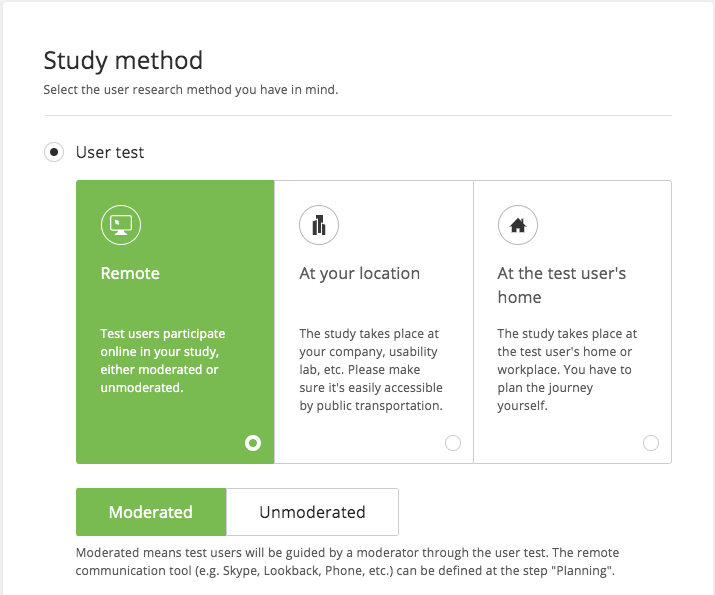
Note that the design also provides explanations for the types of testing on CTAs (“Moderated” and “Unmoderated”). If something requires more explanation – this often applies to mobile apps where the space for copy is quite limited – provide a separate section.
Here’s how Ryanair’s app explains the baggage options for the customers. Using a visual as well as a bullet point with characteristics is a good idea to ensure that the user understands what they’re going to pay for.
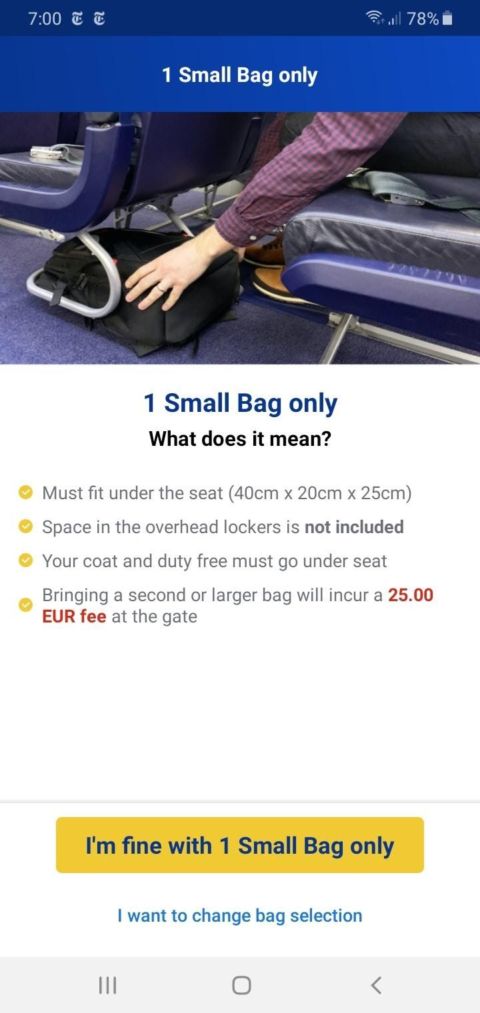
As always, multiple options are provided to give the user the freedom to change their ticket reservation.
3.4 Be transparent about privacy
If you’re collecting private information, make sure that the user knows how you intend to use it. This is done by making access to it readily available in the appropriate place.
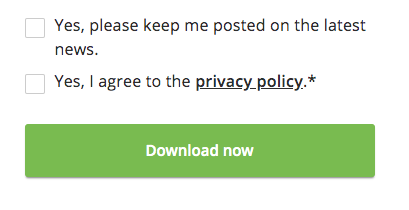
Under no circumstances, you should hide it elsewhere on the website, an app, or another digital product.
3.5 Make cancelling easy
Some unethical UX designers make it ridiculously easy to create accounts by designing the easiest possible UI. Getting out of these accounts is a whole different story. If you’re asking the user to create an account, sign up for a newsletter, or perform an action, always include an option to cancel. Like the Duolingo app that offers “No thanks” in the image below, give your users an option to get rid of anything you might be pushing onto them.
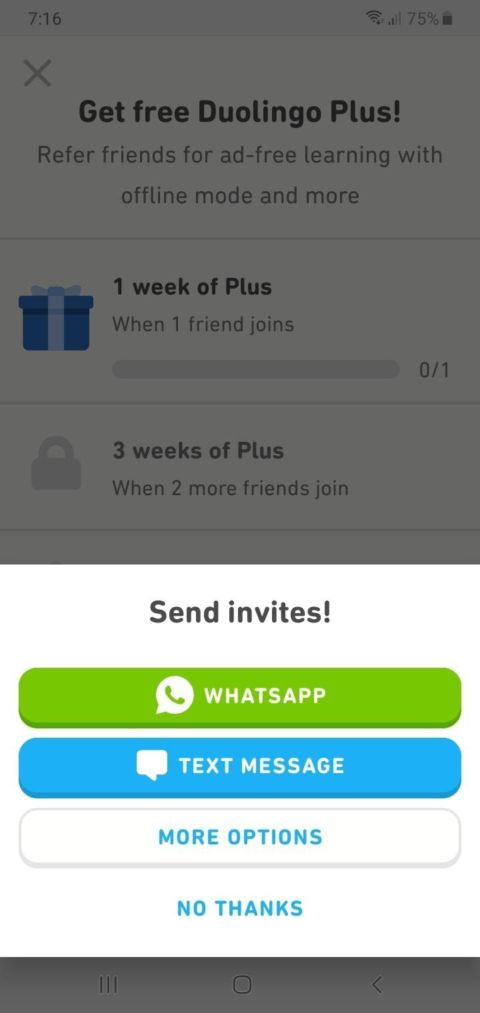
It’s okay if this option isn’t the most colourful one or at the very bottom of the list. Just make sure it’s there.
4. UX ethics: final thoughts
UX designers are in a unique position to influence people’s lives, so they need to be mindful of the ethical issues that come with the role. Hopefully, this guide has been a nice introduction to the world of ethics in UX research and design and gave you some insights you could use to make better products.
